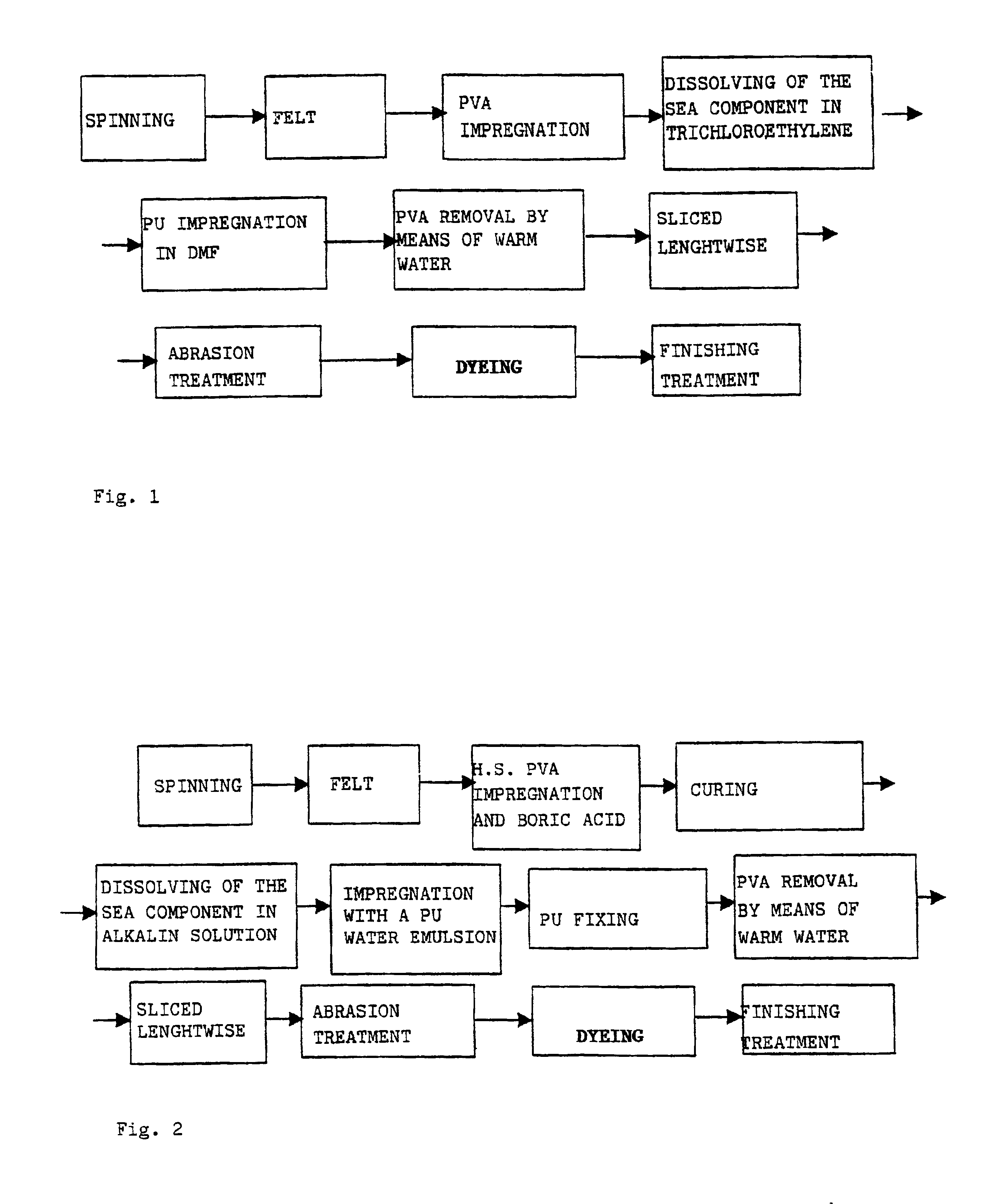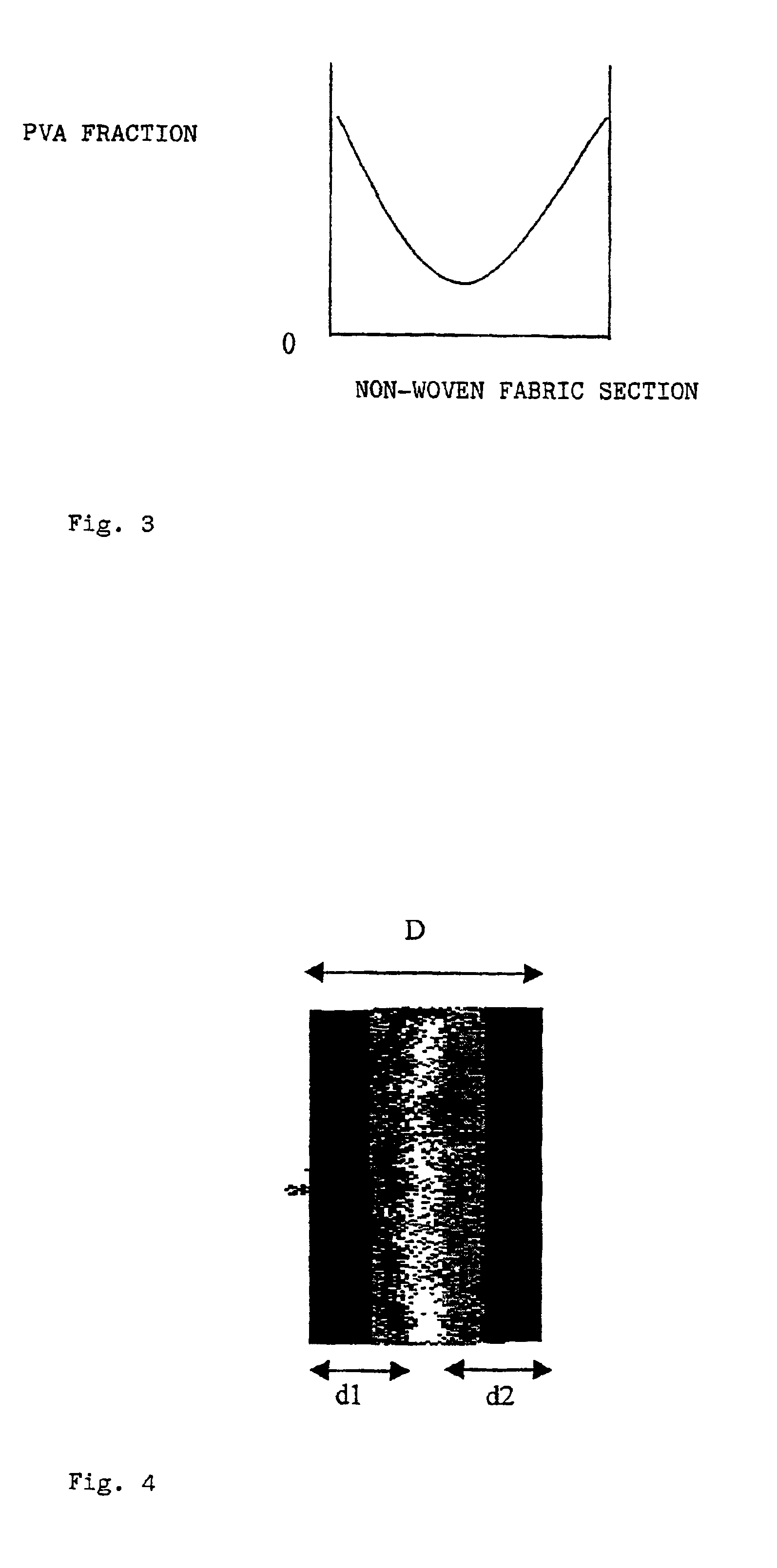Method for the production of microfibrous suede-finish non-woven fabric without using organic solvents
a non-woven fabric and micro-fibrous technology, applied in the direction of weaving, synthetic filaments, coatings, etc., can solve the problems of high labor and industrial cost, unsatisfactory tactile and physical-mechanical characteristics of finished products, and high cost of recovery and disposal
- Summary
- Abstract
- Description
- Claims
- Application Information
AI Technical Summary
Problems solved by technology
Method used
Image
Examples
example 1
Preparation of Non-Woven Fabric Until the Dissolving of the “Sea” Component
[0049]A fiber is prepared in flocking formed from microfibers of PET (polyethyleneterphthalate) (0.13 to 0.15 denier) in a modified polyester matrix (TLAS), having the following characteristic:[0050]1—denier rating 3.9[0051]2—length 51 millimeters[0052]3—curl approximately 4 / cm[0053]4—draw ratio 3.5 / 1
[0054]In detail, the fiber is formed from 57 parts by weight of PET and 43 parts by weight of TLAS. If observed in section the fiber reveals the presence of 16 microfibers of PET embedded in the TLAS matrix. With the fiber in flocking, a crude felt is prepared that is subjected to drawing in order to form a drawn felt with density 0.217 g / cc. The drawn felt is re-emerged in warm water at a temperature of 90° C. giving a density of 0.331 g / cc; this is then dipped in a 12% high saponification value polyvinylalcohol solution (H.S.PVA) at a temperature around 70° C. and is thermo-fixed in a furnace at 150° C. for 30 ...
example 2
Preparation of No-Woven Fabric Until the Dissolving of the “Sea” Component
[0055]Take a sample of felt impregnated and thermo-fixed with H.S.PVA as prepared in Example 1 and dissolve the “sea” component of the fiber by immersing it in a 5% solution of NaOH at a temperature of 60° C.; the “sea” component dissolves in 20 minutes and in such conditions 15% of H.S.PVA is dissolved (see Table 1).
example 3
Preparation of Non-Woven Fabric Until the Dissolving of the “Sea” Component
[0056]Take a sample of felt impregnated with H.S.PVA as prepared in Example 1 and thermo-fix it at a temperature of 130° C. The “sea” component of the fiber is dissolved by immersing it in a 5% solution of NaOH at a temperature of 60° C.; the “sea” component dissolves in 12 minutes and in such time 29% of H.S.PVA is dissolved (see Table 1).
PUM
| Property | Measurement | Unit |
|---|---|---|
| temperatures | aaaaa | aaaaa |
| temperature | aaaaa | aaaaa |
| temperatures | aaaaa | aaaaa |
Abstract
Description
Claims
Application Information
 Login to view more
Login to view more - R&D Engineer
- R&D Manager
- IP Professional
- Industry Leading Data Capabilities
- Powerful AI technology
- Patent DNA Extraction
Browse by: Latest US Patents, China's latest patents, Technical Efficacy Thesaurus, Application Domain, Technology Topic.
© 2024 PatSnap. All rights reserved.Legal|Privacy policy|Modern Slavery Act Transparency Statement|Sitemap


